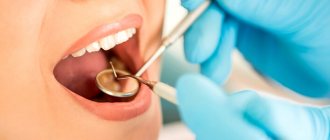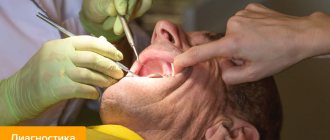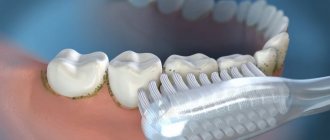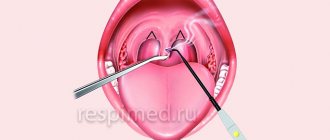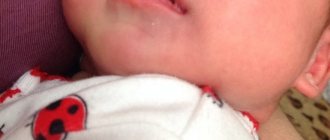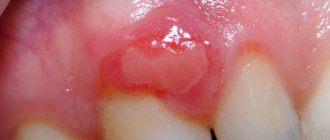Missing teeth is not only an aesthetic problem that causes psychological discomfort. This is also a dental pathology, which can significantly worsen a person’s health and quality of life. We rarely think about the importance of each tooth until we lose it.
Adentia is a disease characterized by partial or complete absence of teeth in the oral cavity. If you do not consult a doctor in time, this disease leads to the formation of malocclusion, speech impediments and problems with chewing food. In this article we will look at what adentia is, the causes, symptoms and treatment of this pathology.
Lack of teeth in humans: what is it and what does it mean?
What is jaw edentia? If in some species of animals the dentition is renewed continuously or at least repeatedly (for example, in Indian elephants), then people have only two sets of teeth - milk and molars. Unfortunately, they can be lost during life, and with some types of anomalies and diseases, a person initially lacks one, several or even all tooth germs. Adentia is a situation where there is a lack of teeth on one or both jaws. In this case, the absence of eights is not taken into account, since they are a rudiment and may not appear in principle. Experts highlight the absence of primary and molar teeth. In the latter case, the loss is irreparable. Therefore, most often they talk about edentulous molars, taking into account the fact that all the most negative consequences of this disease are especially pronounced in adulthood.
What does missing teeth affect?
- Chewing dysfunction.
- Problems with the digestive system.
- Deterioration of aesthetics. The most noticeable consequence of edentia. A diagnosis of “missing teeth” is often a death sentence for a beautiful smile.
- Bone tissue atrophy. Without the load that the teeth bear, the bone tissue begins to dissolve. When there is a lack of teeth, over time the face seems to shrink in the lower part and those same senile sunken cheeks appear. This is a consequence of bone atrophy.
- Curvature of teeth. In the absence of teeth, the bite is disrupted and the dentition shifts. It also distorts a person's facial features.
- Problems with diction.
Unlike many dental diseases, signs of missing molars (as well as milk teeth) are very obvious. Diagnosis of edentia is usually carried out visually. However, to assess the condition of the bone tissue and the entire dentofacial apparatus as a whole, an x-ray examination is necessary. Now that it has become clear what jaw edentia is, it is necessary to talk about the causes and types of the disease.
What can be the complications of adentia?
This pathology requires mandatory consultation and treatment with a dentist. Partial or complete loss of teeth can significantly reduce the quality of life and health problems arise.
Without dental restoration, a person faces the following difficulties:
- Inability to eat solid foods.
- Limiting the diet, as well as poor chewing of food, leads not only to gastrointestinal disorders, but to vitamin deficiency and metabolic diseases.
- Losing more than half of your teeth significantly increases the stress on the remaining teeth. This leads to their abrasion, thinning and fragility.
- Due to jaw deformation, pathological changes in the oral mucosa occur.
- Periodontal disease causes pain when eating and brushing.
- Impaired diction provokes psychological discomfort and limitation of communication.
There is no need to wait for complete destruction of the dentition, since in this case longer and more expensive treatment will be required. If you have problems with your teeth, contact your dentist for a diagnosis.
Causes of edentia
The problem of missing teeth sooner or later arises in almost every person. However, the causes of edentia can be very different. It all depends on whether it is primary (lack of tooth germs as such) or secondary (loss of already formed teeth).
| Primary causes of edentulism | Causes of secondary adentia |
|
|
Symptoms in the primary form
Adentia in children can be detected during the formation of a primary dentition or already with a permanent one. The specialist even notices the symptoms visually: in the absence of teeth and their rudiments, in most cases the structure of the facial skeleton is disrupted. The lower third of the face is unusually smaller in size, the palate is flat, the jaws are poorly developed, and the supramental fold is clearly defined. Developmental disorders can also be observed on the skull: for example, the bones of the maxillofacial apparatus are not fused, the fontanelle and the bones of the skull do not heal as expected. If the cause of the disease is anhydrotic ectodermal dysplasia, in parallel one can observe the absence of eyelashes and eyebrows, early aged skin, and damage to the mucous membranes.
Complete edentulism of the jaw of the primary form is characterized by the fact that the patient cannot eat normally: he is unable to bite and chew food, it is possible to eat only liquid or puree foods. Due to a violation of the structure of the skull, including underdevelopment of the nasal passages, the patient has mixed breathing, breathing simultaneously through the nose and mouth. The person also experiences difficulties in the functioning of the speech apparatus; he is unable to pronounce sounds that involve the teeth and tongue.
Primary partial adentia is characterized by the absence of a normal number of units in the dentition. Neighboring teeth shift into the area of the formed voids, the jaws are not always developed. The location does not matter: they can be outside the dentition, or creep on top of each other. Pronunciation is impaired (with frontal defects), and gingivitis may develop.
Primary and secondary edentulous teeth
Experts distinguish several types and subtypes of adentia. For greater convenience, below are tables showing the types of the disease, combined by certain characteristics.
Primary adentia
Caused by hereditary factors and diseases at the stage of fetal formation. With primary adentia, there is an absence of tooth germs.
Varies:
- partial primary adentia - the absence of one or more rudiments (for example, primary adentia of two incisors);
- complete primary adentia – absence of all tooth buds. It is extremely rare;
- true adentia – absence of tooth buds (without their destruction by diseases and infections);
- false edentia, when different teeth merge into one.
Secondary adentia
Secondary adentia occurs as a result of illness and injury during life.
How much does treatment cost?
Treatment of adentia in children begins with an initial examination and drawing up a treatment plan. Typically, these services are provided free of charge - as a promotion to attract customers. Also, a small patient will need to have an x-ray at a cost of 350 rubles and a panoramic photograph of the oral cavity, the cost of which starts at 1,000 rubles. In addition, before starting treatment of adentia in children, it is necessary to carry out professional oral hygiene at a price of 2,700 rubles and more. Based on the fact that edentia in children is treated primarily by installing removable dentures, parents should be prepared for the following costs for various types of orthopedic structures: a partially removable laminar denture costs from 1,750 to 60,000 rubles, a complete removable laminar denture costs from 40,000 to 100,000 rubles, temporary complete removable denture - from 2,800 to 3,500 rubles. A removable acrylic prosthesis will cost from 12,000 rubles, a bridge prosthesis - from 25,000 rubles. The cost usually includes the manufacture of the structure and its installation by a specialist.
Classification of edentulism by the number of missing teeth
| Number of missing teeth | Classes | general description |
| Partial edentia (ICD K00.00) | Partial primary adentia. Partial secondary adentia. | With partial edentia, from one to 5 teeth or their rudiments are missing on one jaw. Most often, three teeth are missing. |
| Multiple edentia | Multiple primary adentia. Multiple secondary adentia. | Many experts combine the concepts of partial and multiple edentulism. Criteria:
And so on up to 15 units on one jaw. |
| Complete edentia (ICD K00.01) | Complete primary adentia. Complete secondary edentia. | Complete absence of teeth or missing teeth |
Prevention of edentia
By following simple preventative measures, you can avoid serious health complications that can be associated with edentulism. Thus, the risk of developing primary adentia in the fetus can be minimized by strictly following the rules even at the stage of pregnancy planning and immediately at the time of bearing the child. It is necessary to monitor calcium levels and eat enough foods rich in this element for the normal development of the baby. If your child has not been teething for a long time, it is necessary to make an appointment with a pediatric dentist.
To prevent acquired adentia, doctors recommend regularly visiting the dental office for examinations, as well as thoroughly cleaning the oral cavity twice a day and professional sanitation at least once every six months. If for some reason several teeth have already been lost, then you should not hesitate with prosthetics or implantation. It is necessary to find out the cause of tooth loss and eliminate it, restoring the integrity of the dentition.
Classification of missing teeth according to the location of the disease
| By localization | Description |
| Missing upper teeth | The absence of teeth in the upper jaw can be either partial or complete, as well as single. |
| Missing lower teeth | A general designation for a disease indicating the absence of teeth in the lower jaw. |
| Lack of chewing teeth | May be referred to as missing lateral teeth. Lack or complete edentulism in the chewing region. In particular, we are talking about the absence of small molars (premolars) and molars. |
| Missing front teeth | Edentia of incisors or canines in the frontal zone. |
In addition to the classification described above, the type of teeth itself is also taken into account. Based on this, the absence of molars and edentulous primary teeth (not associated with the normal timing of their replacement) are distinguished.
Diagnosis by a doctor
Already during an external examination, the doctor can make a preliminary diagnosis. Symptoms and treatment of pathology are interrelated, so it is important to conduct a preliminary hardware study.
The main diagnostic method is x-ray of the upper and lower jaw. This is especially important when determining congenital adentia, since only in the picture can one see the presence or absence of tooth germs.
In this case, panoramic radiography is recommended for children. This type of diagnosis allows you to see a complete picture of the development and structural features of the maxillofacial joint.
It is also necessary to identify possible contraindications to the prescribed treatment. This is the presence of inflammatory processes or formations in the oral cavity, the presence of roots from decayed teeth and the detection of gum disease.
Treatment of adentia
As has already become clear, the absence of teeth affects both functionality and aesthetics, as well as the overall quality of a person’s life. Treatment of adentia depends on the type, the presence of indications and contraindications for a particular prosthetic technique, as well as the financial capabilities of the patient.
Types of prosthetics in the absence of a large number of teeth and a single defect
| Type of edentia | Prosthetic options |
| Partial | Fixed bridge prosthesis, removable plate prosthesis |
| Plural | If there are a large number of missing teeth, a removable plate or clasp denture with hooks, clasps or attachments is used |
| Completely edentulous jaw | Plate dentures that completely imitate one of the jaws. Edentia of the lower jaw is complicated by the fact that the tongue and cheeks can displace the prosthesis, so prosthetics of the lower jaw in the absence of all teeth is carried out if there is no alternative. The same can be said about edentulism of the upper jaw, because A schematic denture with complete absence of teeth often falls out and can cause discomfort when worn due to the bulky base. |
Note: prostheses in the absence of classical type front teeth (bridges and circuits) are significantly inferior in terms of aesthetics to implant-based structures, therefore traditional prosthetics in the absence of teeth in the aesthetic zone are highly not recommended.
Implantation for edentia
| Type of edentia | Implantation options |
| Partial | Single implantation or fixed bridge prosthesis on implants. |
| Plural | Single implantation or fixed bridge prosthesis on implants. |
| Completely edentulous jaw | Dental implantation for completely edentulous patients usually follows certain protocols (“All on 4”, “All on 6”); however, if funds and positive indications are available, it is possible to install the maximum number of implants. |
Symptoms of adentia in children and adults
Diagnosis of this disease takes a long time. But there are a number of symptoms indicating its presence. It is especially important to take them into account when determining dental edentia in children. These factors include:
- reduction of jaws (both or just one);
- signs of retraction of the cheeks and lips;
- deformation of the alveolar processes;
- the appearance of wrinkles and folds approximately in the places where the twos are located;
- manifestations of muscular atrophy of the oral cavity;
- change in jaw angles.
All these symptoms can lead to the formation of a malocclusion. Malocclusions, in turn, cause certain shifts of the teeth and the formation of gaps in the jaw. In some cases, growths may form that affect the appearance and make chewing difficult.
Complete secondary adentia can be caused by caries, periodontitis, or surgical intervention. The doctor may also notice scars from injuries that led to tooth loss. Another symptom that explains the loss of masticatory organs is the presence of cancer.
It is worth noting that there is a steady downward trend in the age of edentulous dental patients. Poor ecology leads to the fact that young people are increasingly faced with this problem.
Diagnosis and detection of the disease
Edentia is a serious problem, and to solve it it is very important to promptly and accurately identify the presence of pathology and its type.
The first stage of diagnosis is to conduct a visual examination. Based on the results obtained, the doctor determines whether adentia is primary or secondary.
Then it is necessary to take an X-ray of the jaw, especially if the initial examination showed that the disease is congenital. This can only be confirmed with an x-ray, in which a specialist will check for the presence of dental follicles or identify signs of abnormal development.
When identifying the causes of adentia in children, at the initial stage of diagnosis it is necessary to find out the structure of the root system and find out how things are under the gums. Therefore, in the treatment of childhood adentia, the method of panoramic radiography is used. It allows the doctor to obtain a detailed picture, including information about the structure of the bone tissue of the alveolar processes.
Why is timely diagnosis so important?
Timely detection of adentia is of such high importance for one serious reason. The fact is that before starting any therapeutic actions, it is necessary to diagnose and eliminate all existing pathologies.
First of all, these include inflammatory infections of the oral cavity. During treatment, it is recommended to preserve the roots of the teeth as much as possible, since the absence of roots can lead to the loss of the entire masticatory organ. In addition, it is necessary to carry out complete disinfection of the oral cavity.
If the doctor suspects the development of acquired adentia, it is necessary to find out the cause of the disease as soon as possible. This is due to the fact that some pathologies can lead to complications during prosthetics. To eliminate these risks, the dentist checks for the following symptoms during the examination:
- exostoses (benign growths on bones consisting of bone or cartilage tissue);
- unremoved roots covered with mucous membrane;
- tumors and inflammatory processes;
- infections of the oral mucosa.
Types of adentia and their diagnosis
General symptoms indicating the presence of the disease were discussed above. But there are also a number of signs characteristic of different types of adentia. Their knowledge can also help to identify pathology in a timely manner.
Primary complete edentia
The rarest type of disease and at the same time the most serious. With primary complete adentia, the patient does not even have the rudiments of teeth and their roots. This pathology leads to serious consequences, namely:
- facial symmetry is disrupted;
- the correct formation of the alveolar processes of the upper and lower jaws is difficult;
- the secretion of mucus and saliva in the mouth slows down, which can cause additional inconvenience to the patient.
One of the symptoms of primary complete adentia may be paleness of the mucous membranes. The absence of baby teeth in children can also be easily determined by palpation. If such signs are present, it is necessary to urgently take appropriate measures.
Primary partial edentia
It is expressed in the congenital absence of some teeth in the patient. If partial adentia is detected in a child, the x-ray will show gaps in the root system. It should be noted that the absence of wisdom teeth is not considered edentulous.
As the disease develops, diastemas and tremata are formed - spaces between the chewing organs. In simple terms, the teeth begin to “creep”: if you look at a photo of edentia in children, you will notice large gaps between the teeth.
Primary partial adentia can be symmetrical or asymmetrical. In the first case, there are no paired teeth - doubles or fangs. Asymmetrical adentia means the absence of teeth in different places of the jaw.
Secondary complete edentia
This type of disease is diagnosed when it is acquired. Its symptoms can be observed on all jaws or only on one. Both primary and permanent teeth may be missing. Secondary complete adentia is diagnosed when all the chewing organs have fallen out or needed to be removed due to another disease.
One of the main unpleasant consequences of this pathology is jaw deformation. It becomes closer to the nose, soft tissues begin to retract. Also, this type of disease is characterized by muscle atrophy, leading to disruption of the shape of the entire jaw or one or both alveolar processes.
In addition, the loss of all teeth immediately leads to everyday problems - the patient will not be able to chew independently, and will also begin to swallow some sounds.
Secondary partial edentia
This is the most common type of disease, in which several masticatory organs are missing from the dentition. The loss of canines, twos or other teeth often leads to increased sensitivity of bone tissue. This is due to the gradual wear of the side walls of adjacent teeth.
With this complication, the patient faces discomfort, due to which he gradually stops eating solid food, which is difficult to chew. Both children and adults face this problem.
Possible consequences of edentia
Tooth loss is a serious disease that can lead to various unpleasant consequences, including the development of other serious diseases. Among them are the following:
- impaired jaw development, which leads to difficulty pronouncing various sounds;
- the patient is forced to exclude solid foods from his diet, which causes problems with intestinal motility and disruption of the gastrointestinal tract;
- development of persistent psychological discomfort. The patient’s self-assessment is distorted and depression may develop;
- in the complete absence of teeth, the jaw develops abnormally and can put pressure on any area of the head, thereby provoking the appearance of temporal tumors.
Disease prevention
The best prevention of pathology will be high-quality care for teeth and gums: complete teeth cleaning, prof. examinations by a specialist once every 6 months, smoking cessation, proper nutrition.
If you or your family members are faced with this pathology, contact the specialists at West Dental. Experienced doctors at the branches in Yanino-1 and Vsevolozhsk will help you choose high-quality therapy.
Call and make an appointment by phone: +7 (812) 450-00-07. Our clinics are open every day from 9 am to 9 pm.
Types of pathology
The well-known classification contains the concepts:
Primary (congenital) adentia:
- Complete edentulousness is a rare genetic pathology that manifests itself from the birth of a child as the complete absence of dental units on both jaws. During X-ray diagnostics, the absence of the rudiments of permanent units is observed. Due to the pathological condition, the following are determined: deformation of the maxillofacial area, lack of speech and symptoms of other congenital defects.
- partial adentia – incompleteness of the dentition by a certain age period according to medical indicators. The main characteristic is the large distance between a small number of teeth, there is also underdevelopment of the jaw bone and asymmetry of the facial structures.
Secondary (acquired) adentia.
- complete edentia - differs from the congenital type in that, first of all, all the rudiments were laid in a person and healthy units were formed. However, due to various health problems, they are absent. In most cases, surgical extraction is performed due to the large area of damage. The toothless bass thins and moves toward the nose, forming an “old man’s face.” Biting and chewing food bolus is not possible, only liquids are allowed, speech deteriorates.
- partial secondary adentia – characterized by incomplete loss of teeth in adults. The interdental space becomes larger, which leads to a lisp and pathological processes in the oral cavity.
Partial acquired adentia is most often encountered in the practice of dentists. A real pathology indicates the absence of a rudiment, and when the coronal parts of adjacent units are connected and the eruption is delayed, doctors claim a false disease. Taking into account the number of missing units, partial and complete edentia are determined. Partial implies a lack of up to 10 structures, mainly the upper lateral incisors, “fives” and “eights”. If more than 10 units are missing, multiple dental edentia is diagnosed.
Causes (etiology)
The fundamental cause of adentia is the absence or unformation of tooth buds. In the primary condition, the pathogenesis may be inherited or due to detrimental effects during the construction of the fetal dental plate.
Complete adentia from birth in children is a fairly rare manifestation that occurs due to ectodermal dysplasia. The general state of health is complicated by: incomplete development of hair structures, layers of the epidermis, nail plates, excretory glands, eye lenses, and the central nervous system.
Other known reasons include:
- lack of minerals and vitamins in the intrauterine development of the fetus, resulting from illnesses of the mother during pregnancy;
- childhood diseases;
- genetics;
- pathology of the thyroid gland;
- disruption of the formation of the outer layer of the embryo;
- taking medications for the treatment of concomitant diseases (antibiotics, chemotherapy);
- inflammatory purulent processes in the jaws.
The origin of secondary loss of units can be complicated by caries, trauma, phlegmon and abscesses, poor-quality treatment and prosthetics.
Consequences of adentia or tooth loss
How are complete dentition and facial appearance related?
The loss of even one tooth already affects the patient’s appearance, let alone when teeth are completely missing. A person ages sharply, and the effect of the so-called “senile face” appears, when the distance from the tip of the nose to the top of the chin decreases greatly. This occurs due to a decrease in the height of the lower third of the face. Since there are no teeth, the support of the lower jaw by the teeth is lost, and the jaw moves backward in the joint area, and forward and upward in the chin area.
This displacement of the jaw leads to a decrease in the tone of the facial muscles, as a result of which the cheeks and chin sag, the corners of the lips go down, even the lips become smaller, as if falling inward. The face becomes more mature.
Dental restoration has a rejuvenating effect, as it allows you to return the lower jaw to its normal position, which provides the necessary support to the soft tissues and restores the smile. After treatment, patients regain confidence and quality of life improves.
How to improve your facial contour without going to a cosmetologist
The “senile face” effect can also occur with partial loss of teeth, especially the chewing group. Sometimes a woman goes to a cosmetologist to tighten her facial contour, and he refers her to a dentist to restore missing teeth. Good, responsible cosmetologists understand that any rejuvenation procedures will not give the expected effect if there are no teeth in place.
Diagnosis of edentia
Making a diagnosis does not require serious research or additional tests. A careful visual examination by a specialist and an x-ray of the jaw are sufficient.
Additional examinations may be needed to identify factors that interfere with prosthetics:
- inflammatory process;
- tumor;
- damage to the oral mucosa;
- exostosis.
During the examination, the doctor pays special attention to clarifying the nature of the origin of adentia - primary or secondary. For this purpose, radiography is usually prescribed.


